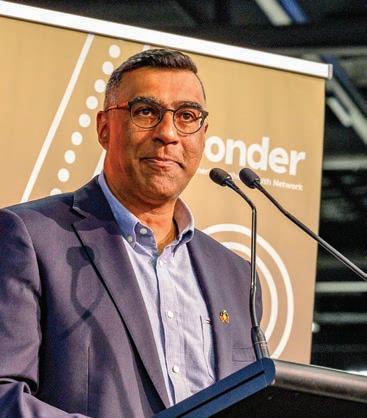
15 minute read
Health Services come together at Closing the Gap Day event
Health Ser vices come together for Closing the Gap Day
Sonder, South Australia’s integrated health service, hosted this year’s Closing the Gap Day at the Adelaide Show Grounds, bringing together health services and community under one roof.
Advertisement
The day was an opportunity for local businesses and South Australia’s peak indigenous health bodies to encourage community to take care of their health. Sageran Naidoo, Sonder CEO said the event was important as it highlighted what health services are available for Aboriginal and Torres Strait Islander people and how to access them.
“Today’s event is an opportunity to bring together 65 stallholders, together with our partners, SA Health’s Watto Purrunna, the Adelaide Primary Heath Network and Nunkuwarrin Yunti to showcase what services are out there so that people may realise they are not alone. It is a day to promote early intervention and educate Aboriginal and Torres Strait Islander people about the range of health initiatives that they can access.”
Mr Naidoo said information about services is not always easy to find. “This idea of having the Closing the Gap Day event comes from the broad notion that there are so many players out there that some of the services get missed. Some of the providers themselves don’t even know what is out there, and this must be doubly confusing for the community” he said.
On the day, people were able to have their general health checks, which often get missed by community members.
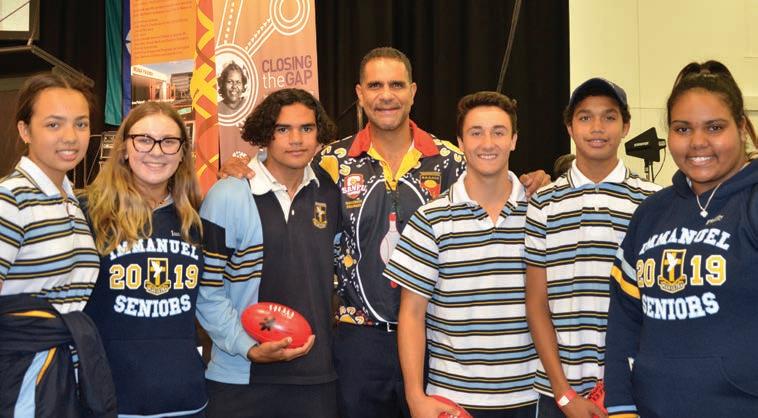

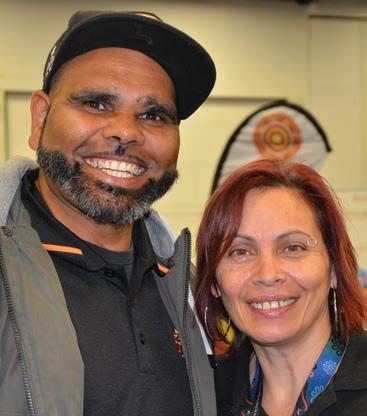

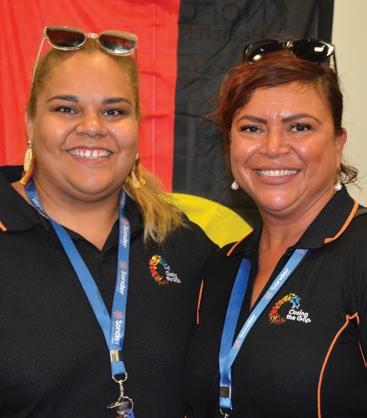


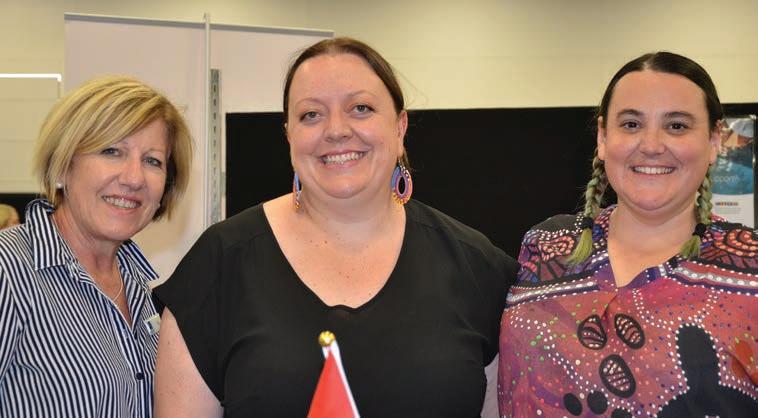
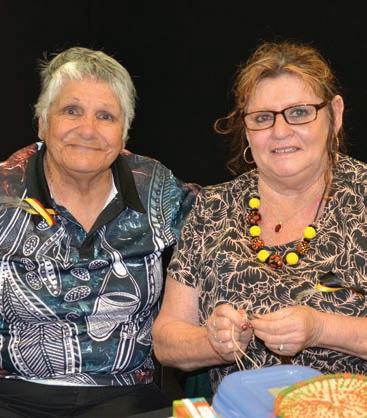
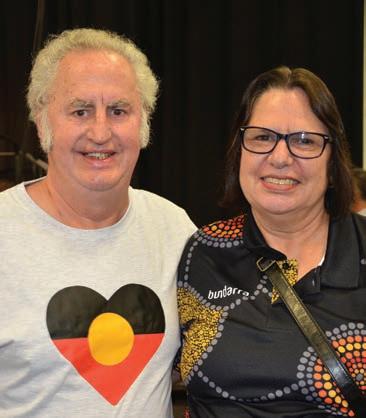
Left to right, from top: Segeran Naidoo, Sonder CEO; Immanuel College students Michael O’Loughlin; Vonda Last; Graham Rigney and Cynthia Fielding; Valor Thad and Joshua Warrior; Amanda Richards and Schania Czygan; Martha Watts; Fred Agius, Geoffery Pryor and Pete Thomas; Janice Rigney and Joyce Mostyn; Serena Cruscanti, Matt Farrell and Eloise Wittkonsky; Liz, Gabrelle and Jaye from Centacare; Richards Willetts and Sheryl Tongerie.
“The day was a great way for families to come along to talk about their health. People need to be aware of how important it is to have a health check once a year. People don’t always get to a GP and they will miss their check-up, and this check-up could help to identify illness and disease early on.”
Miss Cyzgan said that chatting about health in a social setting is a good way to break down barriers.
“It is my job to help people feel culturally safe to talk about their health issues and what can be done for them. The Closing the Gap Day was a way to highlight the support we have in the community and to think about ways to prevent chronic diseases and to keep us healthy.
“This is important because as we know, Aboriginal and Torres Strait Islander people are expected to live 17 to 20 years less than the non-indigenous population. So, the government has put in place these measures for us to utilise, to support our community and to stay out of hospital so more time is spent practicing culture and with family” said Ms Czygan.
The Government’s Closing the Gap report has found there has been little progress with just two of the seven targets on track. The two being educational targets.
In December 2018, The Council of Australian Governments committed to A formal Partnership Agreement between COAG and Aboriginal and Torres Strait Islander Peak Organisations (Coalition of Peaks) came into effect in March 2019.
Mr Naidoo said partnership is the key to better health services.
“There are several ways in which the Commonwealth Government wishes to close that gap. There is employment, educational opportunities and so on, but for us at Sonder, we focus on health and wellbeing. One way in which we do this is by recognising that no single agency can close the gap in any one of those fields without thinking about the other and we believe that a partnership approach is a must”.
“It is overwhelming to see this in action today with all the stallholders and people getting together. Last year we had close to 1000 people and today we have over 3000. This shows people are wanting to learn and they are asking for change.
“We have created a website, ClosingTheGapDay.net and what we want to do is enable people beyond today to find out who are the stallholders and how they can help. It’s about changing the culture of how we work together, it’s about promoting a culture of love and that way we will continue to make a difference” said Mr Naidoo.
For more information go to sonder.net.au

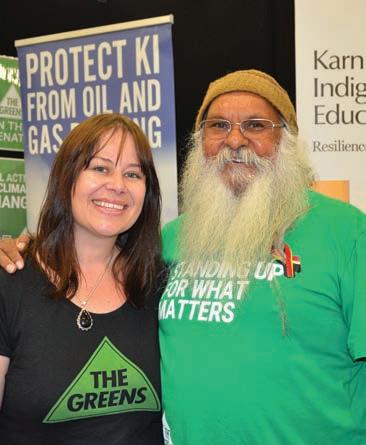
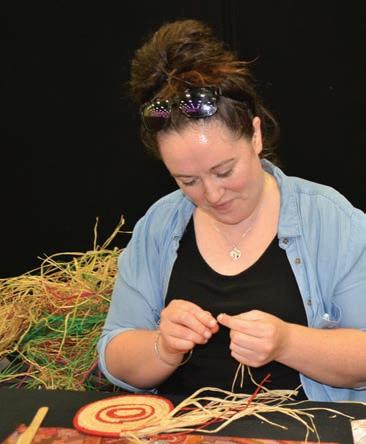
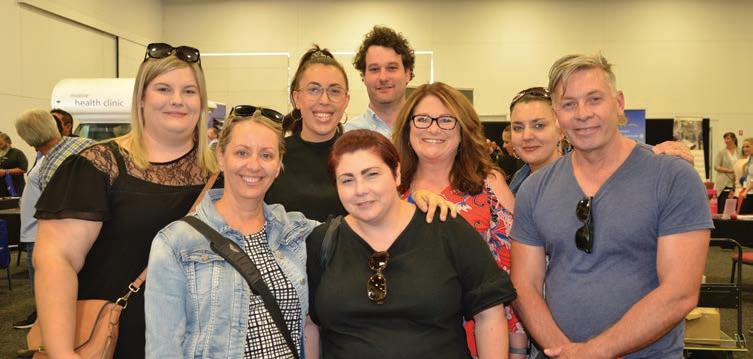
Above, from top: Watto Purrunna Health Care Service staff and stall; Tammy-Jo Sutton and Major Moogy Sumner; Emma Leek; Life without Barriers and Mind staff.
First Nations SA representatives left to right: Lorraine Merrick (Co-Chair), Steven Ed, Bernadette Lawson (SANTS), Travis Thomas, Joshua Haynes (Treasurer & Spokesperson), Lizzie Poole and Garth Agius (Co-Chair).
First Nations SA Aboriginal Corporation appoints of fice bearers
The First Nations of SA Aboriginal Corporation (FNSA), the peak body for First Nations across South Australia held a Directors meeting on Kaurna land at the Living Kaurna Cultural Centre on 24 & 25 March 2019.
The Corporation was incorporated in November after a lengthy process involving more than twenty Aboriginal Nations through their native title groups and organisations.
On Sunday 24 March the representatives present discussed business to enable the group to represent, advocate and progress the collective interests of all South Australian Aboriginal Nations.
The Corporation appointed the following office bearers:
Co-Chair – Kaurna representative Garth Agius
Co-Chair – Arabana representative Lorraine Merrick
Treasurer and spokesperson – Yandruwandha Yawarrawarrka representative Joshua Haynes The meeting discussed strategic and communication plans for the Corporation to work towards achieving its vision of “a peak body with a united voice for the benefit of all First Nations across South Australia”. The meeting approved official membership applications from several First Nations corporations and continues to welcome further membership applications from Prescribed Bodies Corporate (PBCs), native title groups and other First Nations groups from across the state.
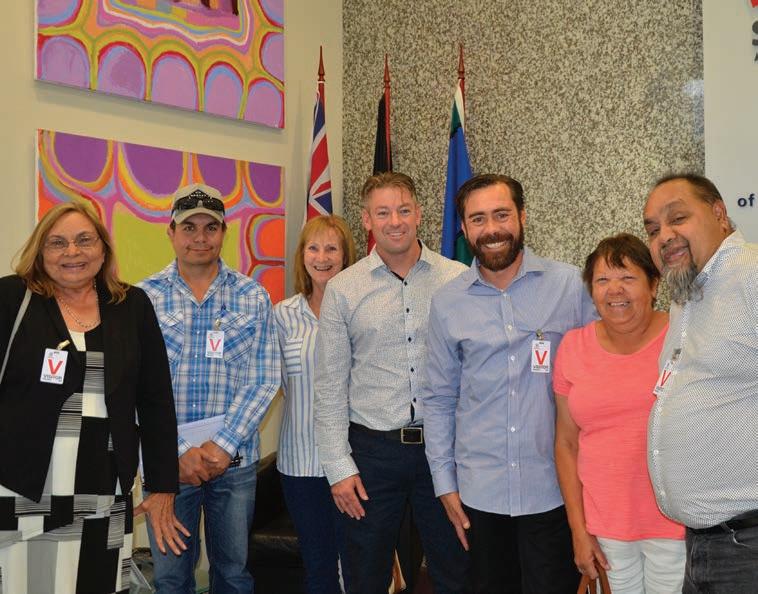
The meeting discussed the state’s current Heritage Guidelines and correspondence from the SA Attorney General on the current operation of the system. The members present discussed the new Landscapes SA Bill which is currently before the SA parliament.
On Monday 25 March FNSA participated in an initial consultation conducted by Price Waterhouse Coopers on behalf of the state government about a proposed National Gallery for Aboriginal Art and Cultures.
For more information on the proposed new Centre see article on page 13.
All First Nations groups in South Australia, including PBCs and native title groups are invited to become members of First Nations SA and contribute to the group’s future directions.
For further information: Bernadette Lawson bernadettel@nativetitlesa.org
Aboriginal Veterans and Ar tists come together in unique project
Aboriginal veterans and artists have worked together to create a new exhibition that showcases the previously untold stories of Aboriginal South Australia Veterans of the Vietnam War.
VIETNAM – ONE IN, ALL IN is the third instalment of the creative Aboriginal Diggers program by Country Arts SA that focusses on the experiences of Aboriginal veterans.
Sam Yates, Executive Producer of the Aboriginal Diggers Program told Aboriginal Way that all the projects have uncovered personal stories and the harsh reality of Aboriginal people not being recognised for their service.
“With all of the three projects, we went through a consultation stage with the community to find what are the stories that they’d like to have told, and what are the gems that we could actually capture and share with community to help people understand the importance of Aboriginal soldiers, and the commitment and the sacrifices they’ve made, all the while coming back, say from war with no acknowledgement of what they’ve done” she said.
For the third project in the series, Country Arts SA, led by creative producer Lee-Anne Tjunypa Buckskin consulted with community and the Aboriginal Veterans of South Australia Committee to find out what stories should be told and who is willing to share their personal experiences.
Exhibition curator, Jessica Clarke joined Ms Buckskin to visit veterans across South Australia.
Ms Clarke, along with Ms Buckskin, travelled the state to engage with Aboriginal veterans and ask them to share their experiences.
Ms Clarke said it was inspirational to hear their stories.
“It was a really powerful, and challenging experience, especially hearing some of the things that they shared with us through the conversations. I mean, you’re sitting across the table from a veteran who’s served and who’s dedicated their lives to community after coming home. They were just so incredibly generous with their time and what they told, what they shared” said Ms Clarke.
After the stories were collected, Country Arts SA put a call out to South Australian Aboriginal artists to collaborate with veterans to create an artwork that reflects the veteran’s experience.
Ten artists were selected and paired with one veteran.
Those pairings were carefully considered Ms Clarke explained.
“The next conversation was thinking about the pairings, and which artists, where they’re from, where their country is, personality types or connections – personal connections some of them may have had and pairing them up in a way that would work.
“Each artist was then given the transcript of the Veteran’s story and was asked to creatively respond to that in the form of a contemporary work that would acknowledge the veteran’s story and sacrifice and celebrate their life beyond that service” said Ms Clarke.
Country Arts SA hosted an event late last year which brought all veterans and artists together. “It was a bit of speed dating for everybody to get to know each other and it was important for the artists and the veterans to have time to go off and have their own conversations and just start that connection” said Ms Yates.
Ms Clarke said a long-lost connection was made on the day when two veterans recognised each other from training before their service in Vietnam.
“They went to the Vietnam War at different times and came back, and they had not seen each other until the meeting last year” Ms Clarke said. There are thirteen works in the show, with ten works that respond to the Veterans stories and three additional commissions.
Kaurna Ngarrindjeri elder Uncle Moogy Sumner was asked to create an honour role to acknowledge Vietnam Veterans from South Australia both living and passed. The result is a Ngarrindjeri shield cast in glass.
Artist Raymond Zada also contributed a social commentary piece that engages with the things that were going on at the time of the Vietnam War.
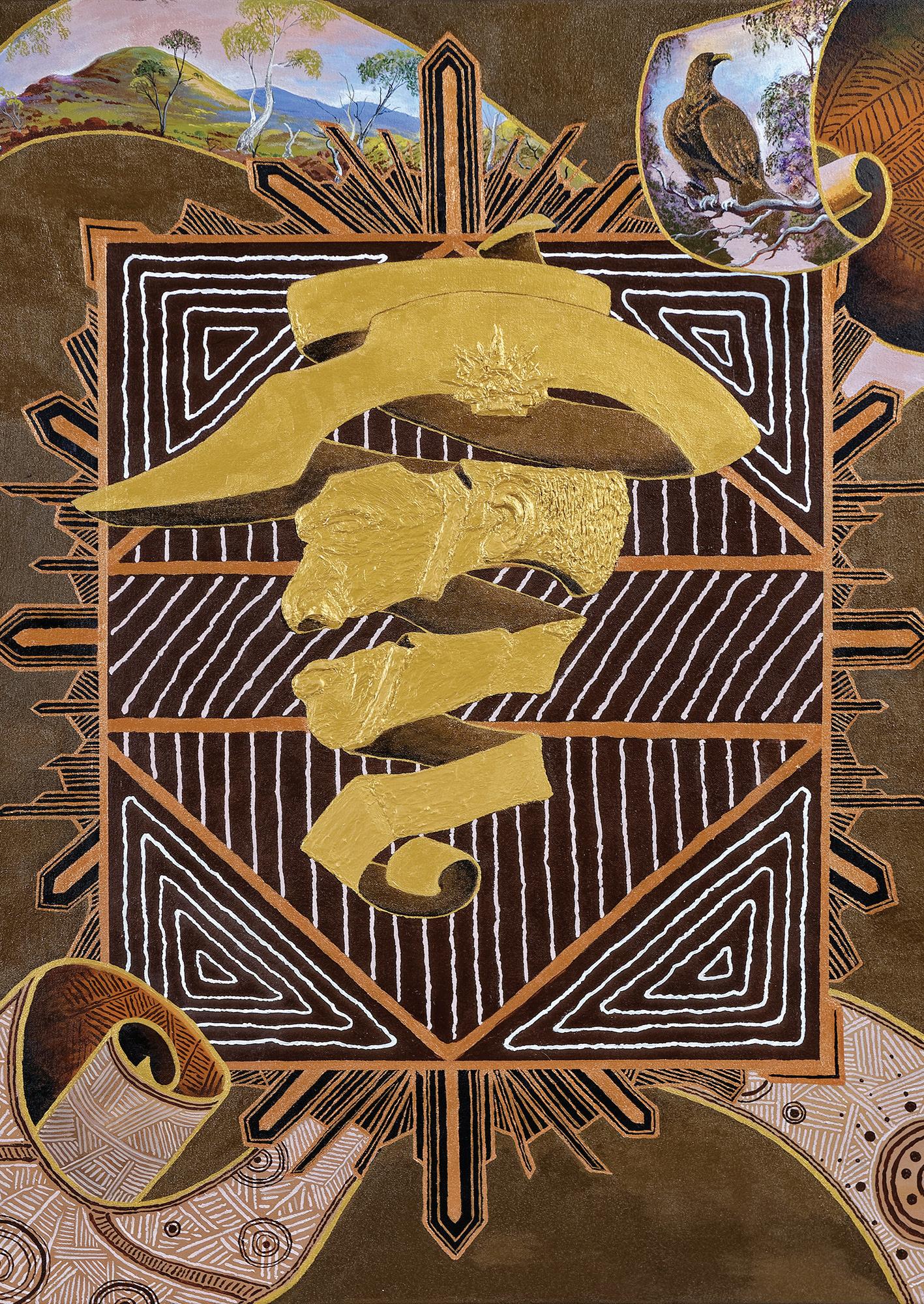
Beaver Lennon, Indigenous Return, Vietnam Veteran (2019), impasto and acrylic on canvas, 81 x 136cm. Photo Chris Herzfeld.
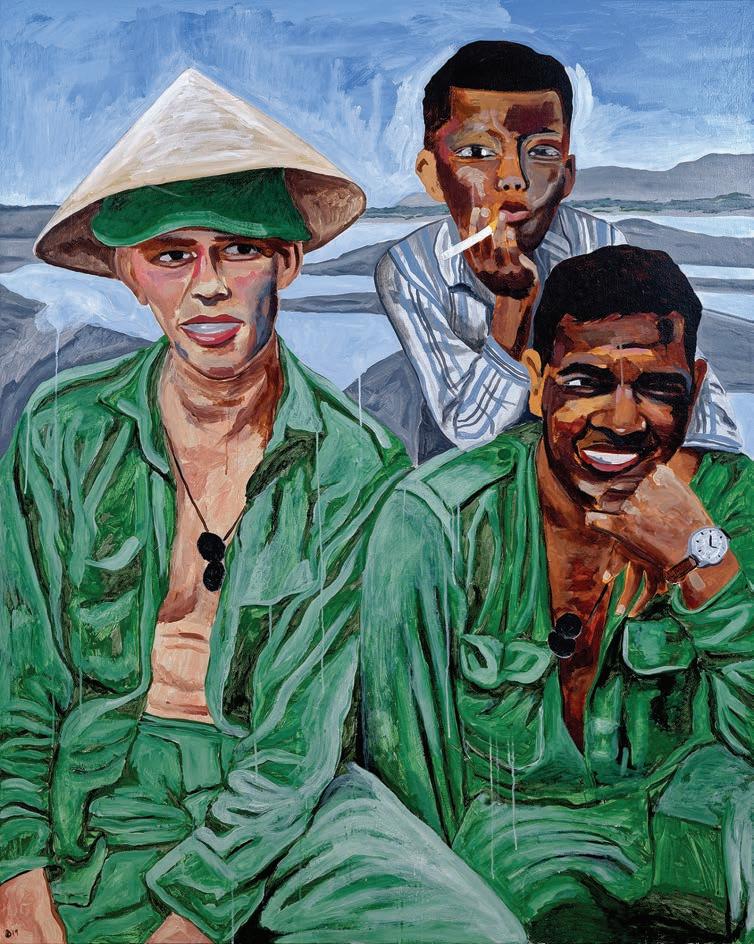
Damien Shen, All I want to say (2019), acrylic on canvas, 150 x 120cm. Photo Chris Herzfeld.

Damien Shen, One In, All In (2019), acrylic on canvas, 150 x 120cm. Photo Chris Herzfeld.
It is “an incredibly powerful video, which speaks to the effects of PTSD” said Ms Yates.
Photographer Colleen Strangways was commissioned to create portraits of all the veterans involved.
Ms Clarke said because of the diverse stories and artists who created them, the result is an interdisciplinary show. “There’s traditional weaving, a collection of spears that are dedicated to each of the veterans, which is super powerful. We’ve got video on a TV screen, there’s lots of paintings and mixed media, and a wall hanging. So, it’s quite diverse” she said.
The VIETNAM – ONE IN ALL IN exhibition is on show at Tandayna through April and May. It then tours to Port Lincoln and Port Augusta.
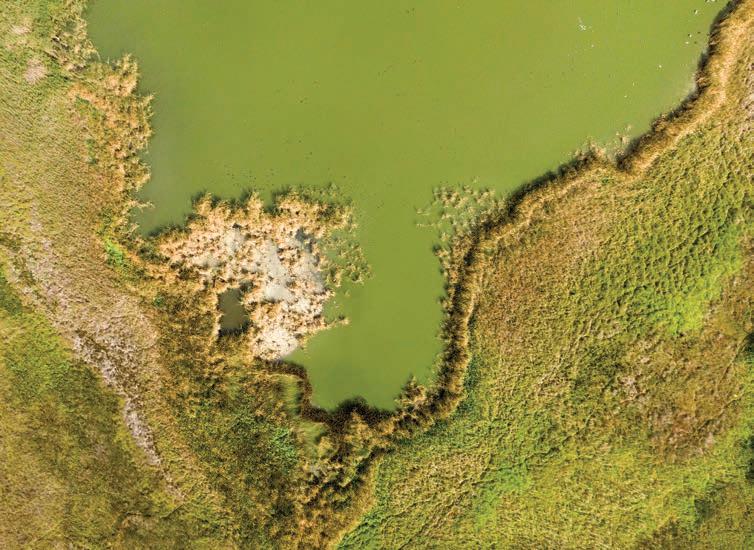

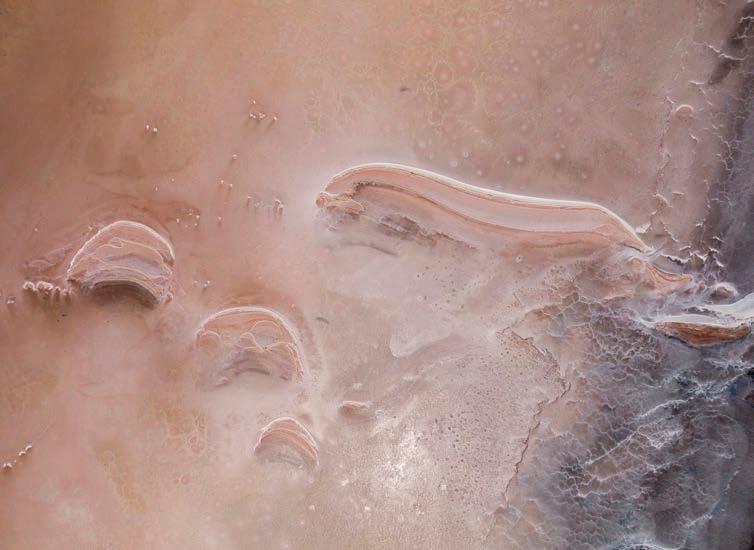
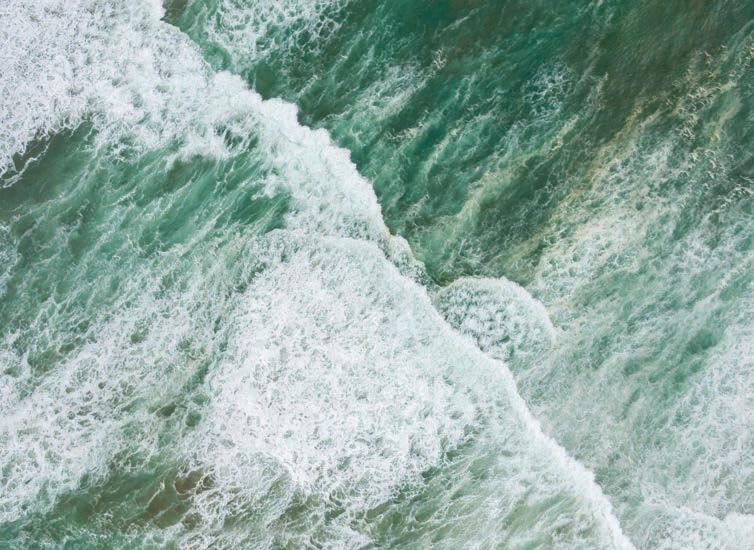
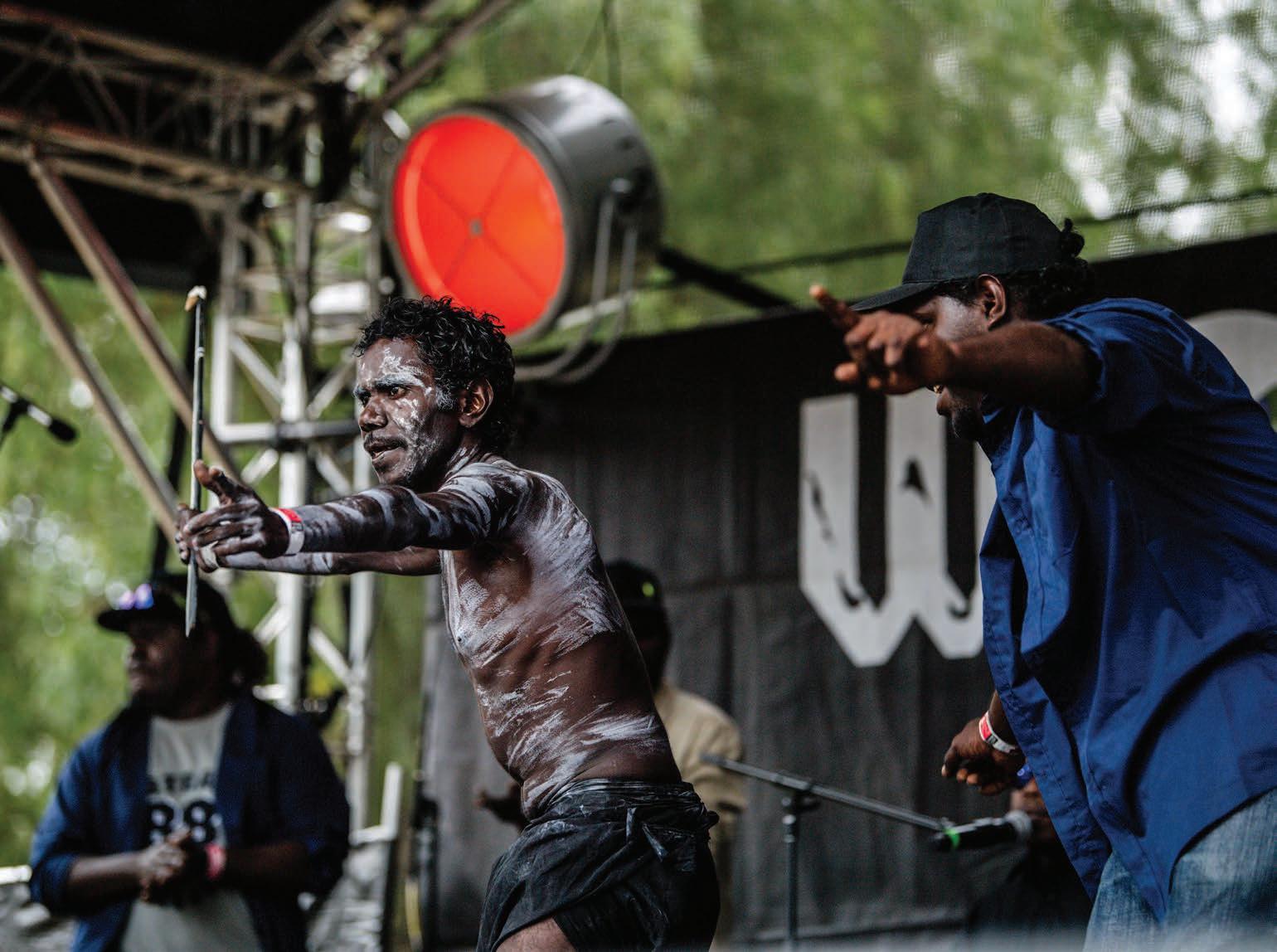
When WOMADelaide 2019 took over Adelaide’s Botanic Park in March, it welcomed artists from all around the world.
For one Australian band, the journey to bring their music and culture to WOMAD audiences was a big one. Mambali are a nine-piece band from the small community of Numbulwar in Eastern Arnhem land in the Northern Territory. They’ve been together for over ten years, but the visit marked their first time out of the Northern Territory for many of the band members. Singer Bradley Bara spoke to Aboriginal Way ahead of their performance.
“All the boys are excited and for a few, this is actually their first time jumping on a big plane, on a flight down south.
“Especially coming out from a small community. The furthest the boys have been as far as only Darwin but that’s it, never been out of Northern Territory so this is the first time and very exciting” he said.
Mambali sing traditional songs about their culture Mr Bara explained.
“We sing in a language called Nunggubuyu, from Numbulwar, and few parts of Anindilyakwa from Groote, and] and a bit of English as well” Mr Bara said “We sing about our culture, our song lines and the Dhumbul Dance, that’s our song line, the Dhumbul Dance means the Devil Dance. We represent as well is the morning star” Mr Bara said.
They also combine rock with the traditional music and dancing.
“In our community, we have two sorts of musics; we have the modern music, that you play music, and you sing and you make your own stuff, and we have the traditional songs that you sing with a didge and the tapping sticks, and Mambali decided we’ll try to put our traditional songs and our ancient chants into modern music, mix them together, and we’ll play that” Mr Bara said.
The combination was well received at WOMAD, with an inspiring energy on stage leading audience members to jump up and try the dance moves.
“It’s very exciting for us performing our traditional songs, showing the audience and it’s very exciting and it’s very powerful as well sharing our culture to other people to understanding our culture.
“We do it so that the younger generation can understand the traditional music and the modern music to understand where they’re from just to pass on to the next generation to understand where they’re from and where their language is and where the song lines from” Mr Bara said.
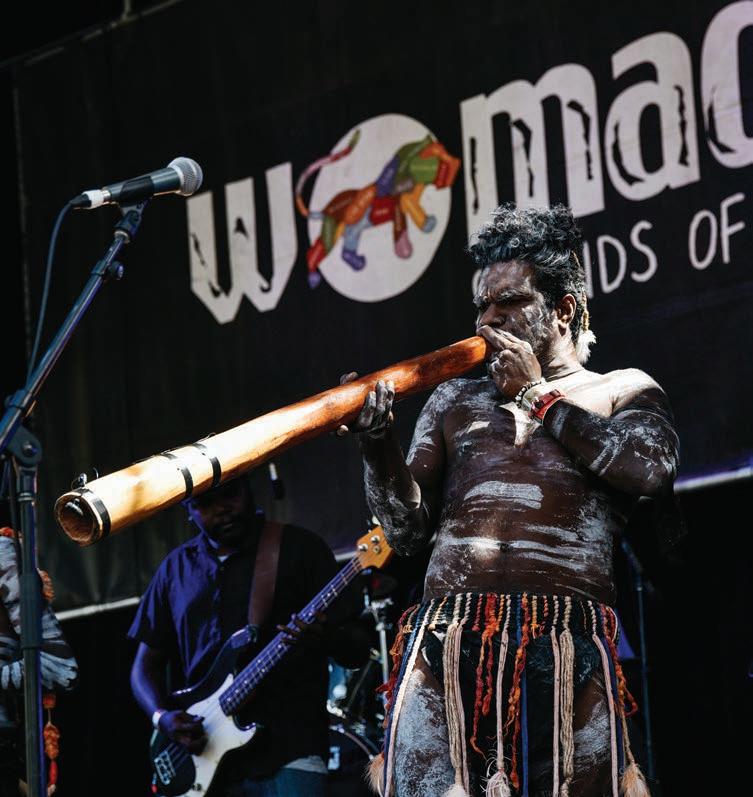
Photo by Jack Fenby. Photo by Morgan Sette.


Mantawu Ngawiri
Ngarrindjeri people welcomed the cast and crew of a film production of the well-known and loved story of Storm Boy to their country.
Storm Boy follows the unbreakable bond between a young boy Michael Kingley and his pelican friend, Mr Percival. The story is set on the Coorong, which is within the traditional lands and waters of the Ngarrindjeri people.
Now available on DVD, the latest film production of Storm Boy sees Michael (Finn Little) raise three rescued pelican chicks with the assistance of his father Hideaway Tom (Jai Courtney) and Fingerbone Bill (Trevor Jamieson). Many years later, Michael Kingley (Geoffrey Rush) retells the adventurous and emotional story of Mr Percival to his Granddaughter Maddie (Morgana Davies).
The Storm Boy film captures the beauty and power of the Coorong on Ngarrindjeri country. The word “Coorong” comes from the Ngarrindjeri word “Kurrangk” which means long neck of water. The Storm Boy film features Ngarrindjeri language, such as “no:ri”, pelican and “nga:tji” totem.
When the crew came to the Coorong, Rita Lindsay, Michael Lindsay and the Rritjarukar (Willy Wagtails) dancers performed a Ngarrindjeri Welcome to Country and smoking ceremony for the director, producers, cast and crew of Storm Boy on location at Godfreys Landing, Coorong National Park.
The Rritjarukar, Willy Wagtails, is an intergenerational dance group who perform songs and dances entirely in the Ngarrindjeri language.
Ngarrindjeri language consultant, Rita Lindsay, provided Ngarrindjeri language for the Storm Boy film. Rita also provided the Ngarrindjeri name for Storm Boy, Mantawu Ngawiri. Mantawu meaning “Storm” and Ngawiri meaning “Boy”.
It is estimated that there were approximately 500 Aboriginal languages. Today, there are less than 250 languages. The Ngarrindjeri language is currently considered an Endangered Aboriginal language. The sound of the language has survived. Ngarrindjeri Elders have led the way and have been instrumental in the ongoing efforts to maintain the Ngarrindjeri language.
The Ngarrindjeri language is embedded within the lands, waters, sky, spirit world and all living things. It is our cultural responsibility to assist in the maintenance and continuity of our languages and culture. We also have a cultural responsibility to care for country and to respect all living things for the benefit of future generations.
The Rritjarukar (Willy Wagtails) would like to thank the following: Director Shawn Seet, Producer Matthew Street, Producer Michael Boughen, Cast and Crew of Storm Boy, Stormy Productions, SA Location Manager, Mark Evans, Associate Producer Kylie Mascord, Home Entertainment, Neha Lokesh, Liquid Ideas, Ngarrindjeri Elders and community, Coorong National Park Department of Environment Water and Natural Resources Ranger Tim Hartman, Heritage Specialist Candice Love, Grant Rigney, the Spirit of the Coorong, friends and family of Rritjarukar.
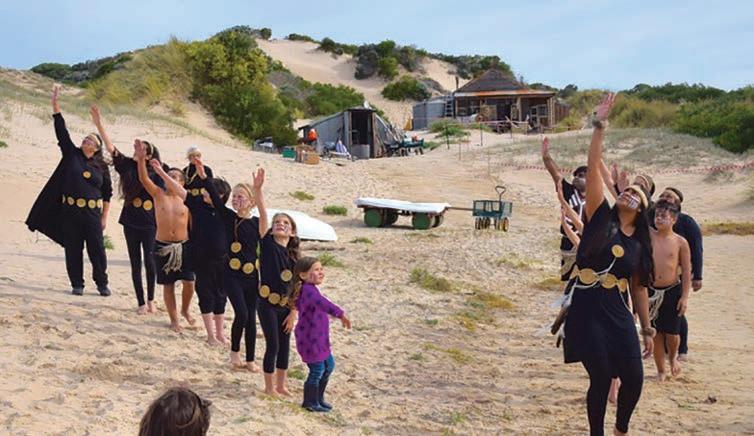
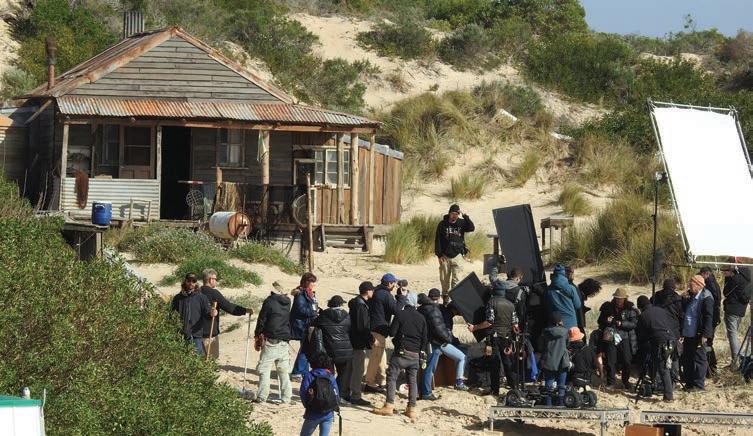

Above, from top: The director, producers and cast and crew of Storm Boy gather for the Ngarrindjeri Welcome to Country and smoking ceremony on location, Godfreys Landing, Coorong National Park. Photograph courtesy of Mark Evans; Rritjarukar (Willy Wagtails) perform the No:rar (Pelicans) dance. Photograph courtesy of Mark Evans; On filming location, Godfreys Landing, Coorong National Park. Photograph courtesy of Rita Lindsay; Rritjarukar (Willy Wagtails) with Jai Courtney, Finn Little and Trevor Jamieson. Photograph courtesy of Jeremy Pearson.



